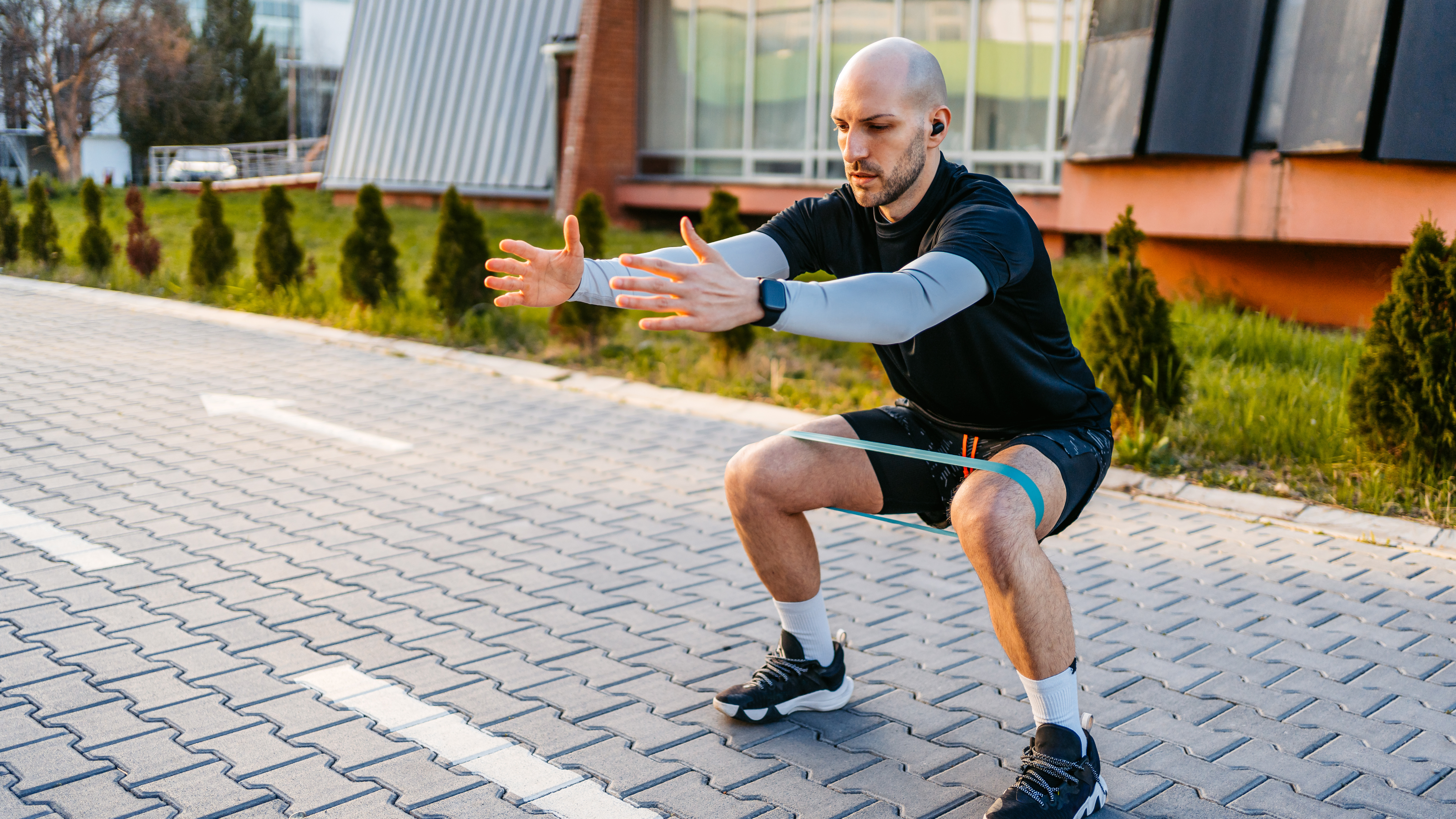The seven moves you should be doing to build a resilient body, according to a functional strength expert
A prehab routine that anyone can benefit from

Most people don't think about strengthening their joints until they get injured—but you can reduce your chance of getting injured in the first place if you do the right exercises.
Jason Pak, a certified trainer specializing in functional fitness, recently shared a prehab routine that anyone can benefit from.
It features seven moves designed to reduce your risk of injury by targeting underused muscles and stretching out commonly tight joints.
To do it, you'll need a raised surface, a sturdy bench and a resistance band.
You don't need to do all the moves in one session. Instead, try using them as exercise snacks throughout the week or dropping them into your warm-up.
How to do Jason Pak's prehab routine
Pak says he does the following moves for five minutes each, throughout his week.
- Calf raises
- Copenhagen planks
- Band walks
- Supine banded hip flexor work
- Supermans
- 90/90 hip rotations
- Step downs
You'll need a mix of short and long-looped resistance bands for these exercises, so it's useful to have an open-ended set like this. You can tie the bands to create the shape you need and as these bands are made with natural rubber, they're suitable for anyone with latex allergies.
What are prehab exercises?
If you've ever had an injury and visited a physical therapist, you've probably been given rehabilitation exercises to support the damaged muscles or joints. Pak's routine consists of prehabilitation exercises, which are instead designed to prevent injuries.
Start your week with achievable workout ideas, health tips and wellbeing advice in your inbox.
"You use prehab exercises to shore up and strengthen weak links to prevent injuries from ever happening," Pak explains in his video.
These exercises target sensitive joints and underused muscles, which may have become deconditioned. For example, the Copenhagen planks target the hip abductors and outer thigh muscles, which are common problem areas for people who sit a lot.
Doing these exercises can help prevent injury, especially if you like to put your body through the wringer with heavy lifts and explosive HIIT workouts. But anyone can benefit from these moves—and they might even reduce joint discomfort and backache.
Alice Porter is a freelance journalist covering lifestyle topics including health, fitness and wellness. She is particularly interested in women's health, strength training and fitness trends and writes for publications including Stylist Magazine, Refinery29, The Independent and Glamour Magazine. Like many other people, Alice's personal interest in combining HIIT training with strength work quickly turned into a CrossFit obsession and she trains at a box in south London. When she's not throwing weights around or attempting handstand push-ups, you can probably find her on long walks in nature, buried in a book or hopping on a flight to just about anywhere it will take her.

